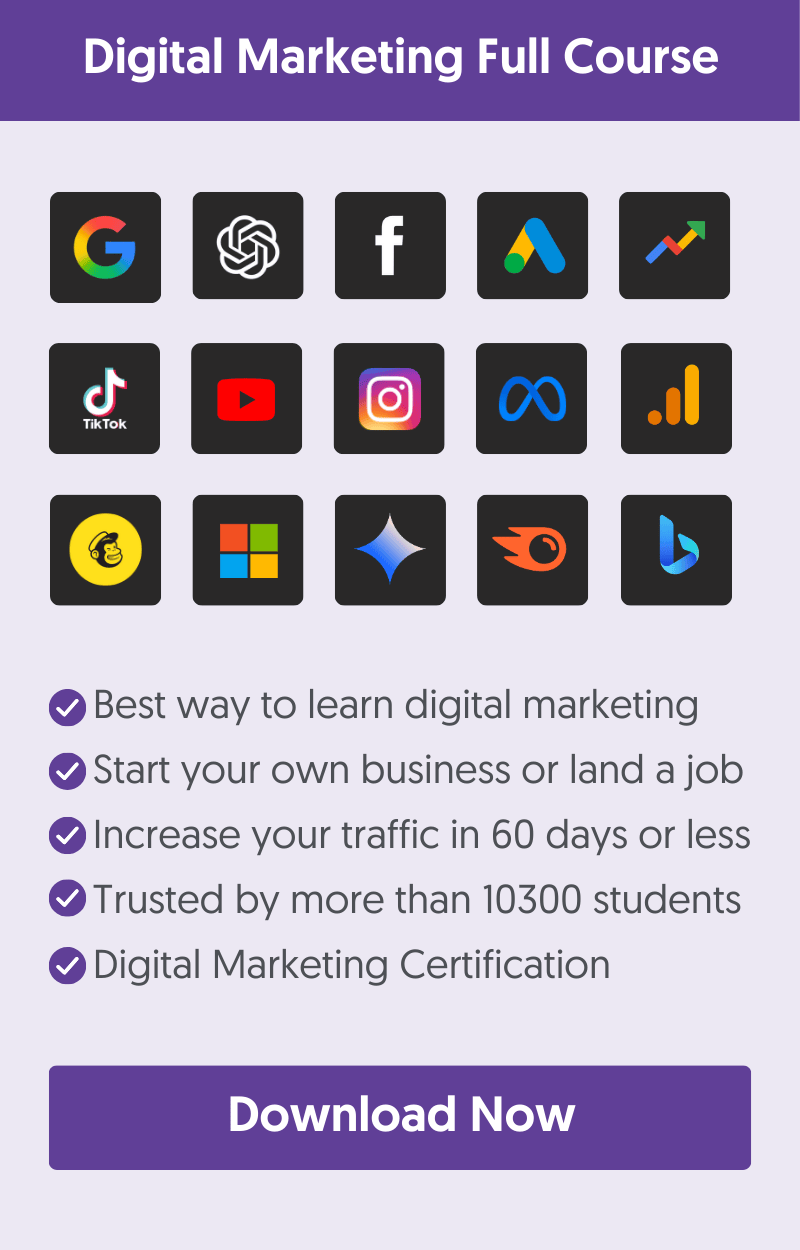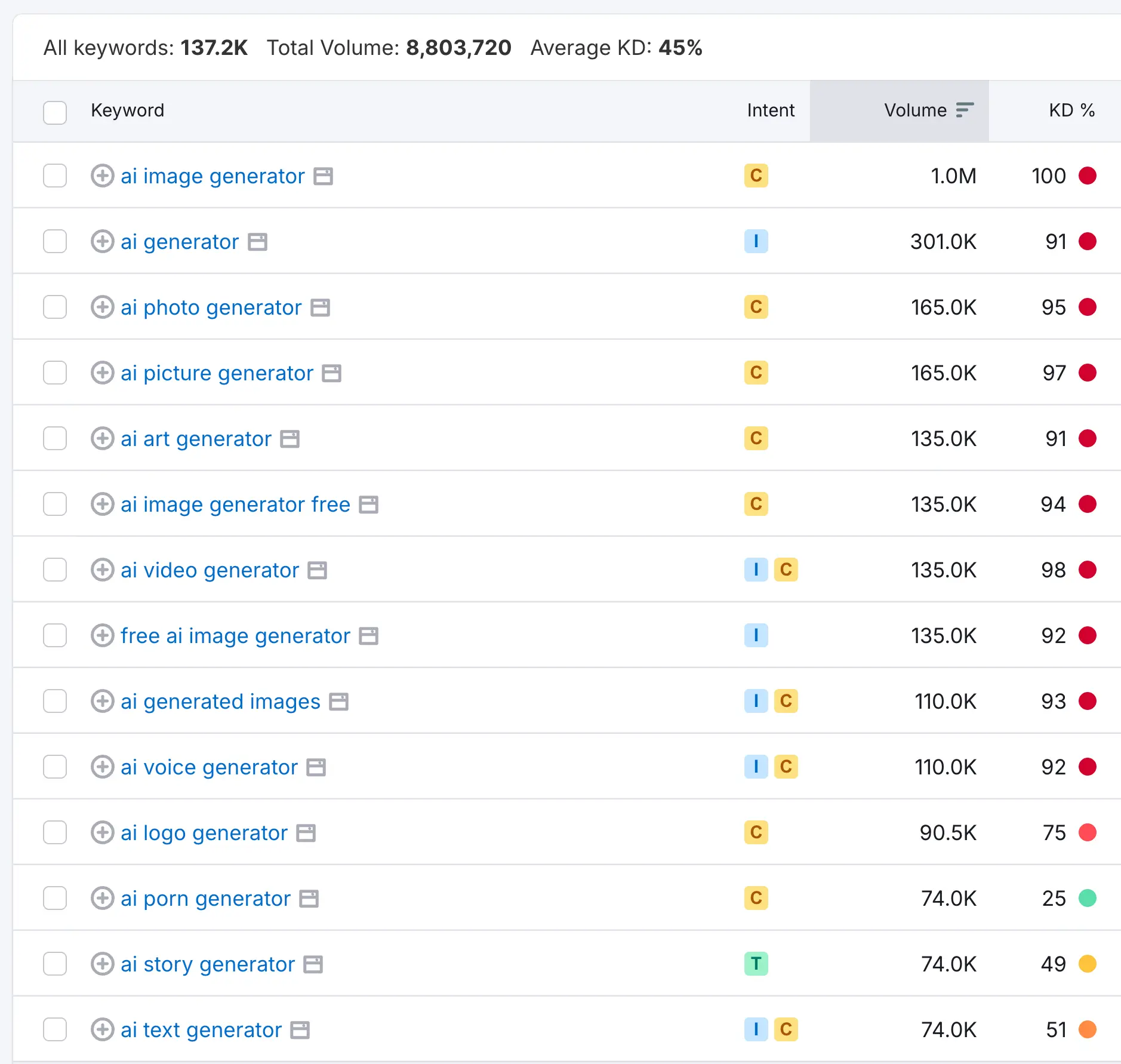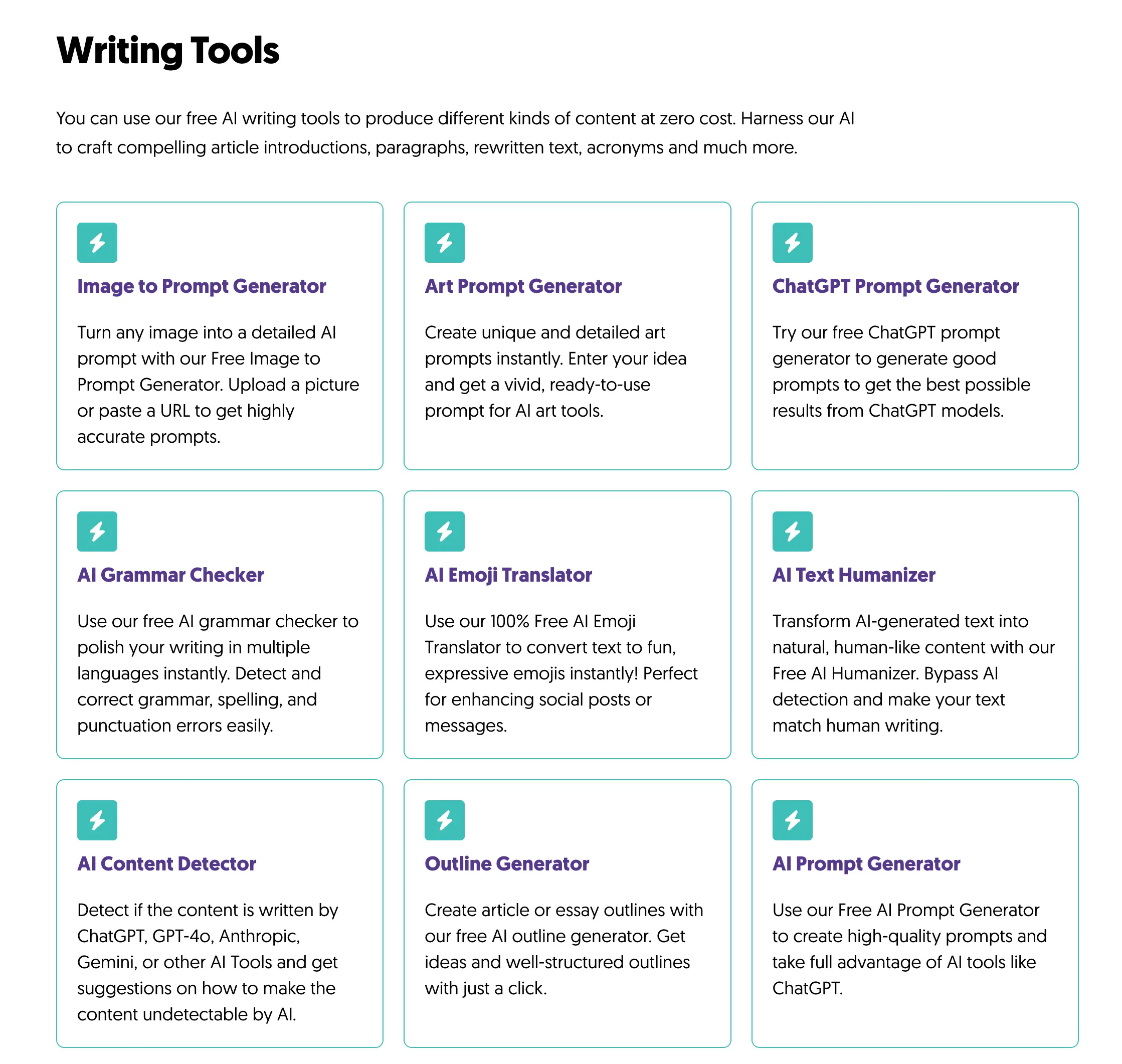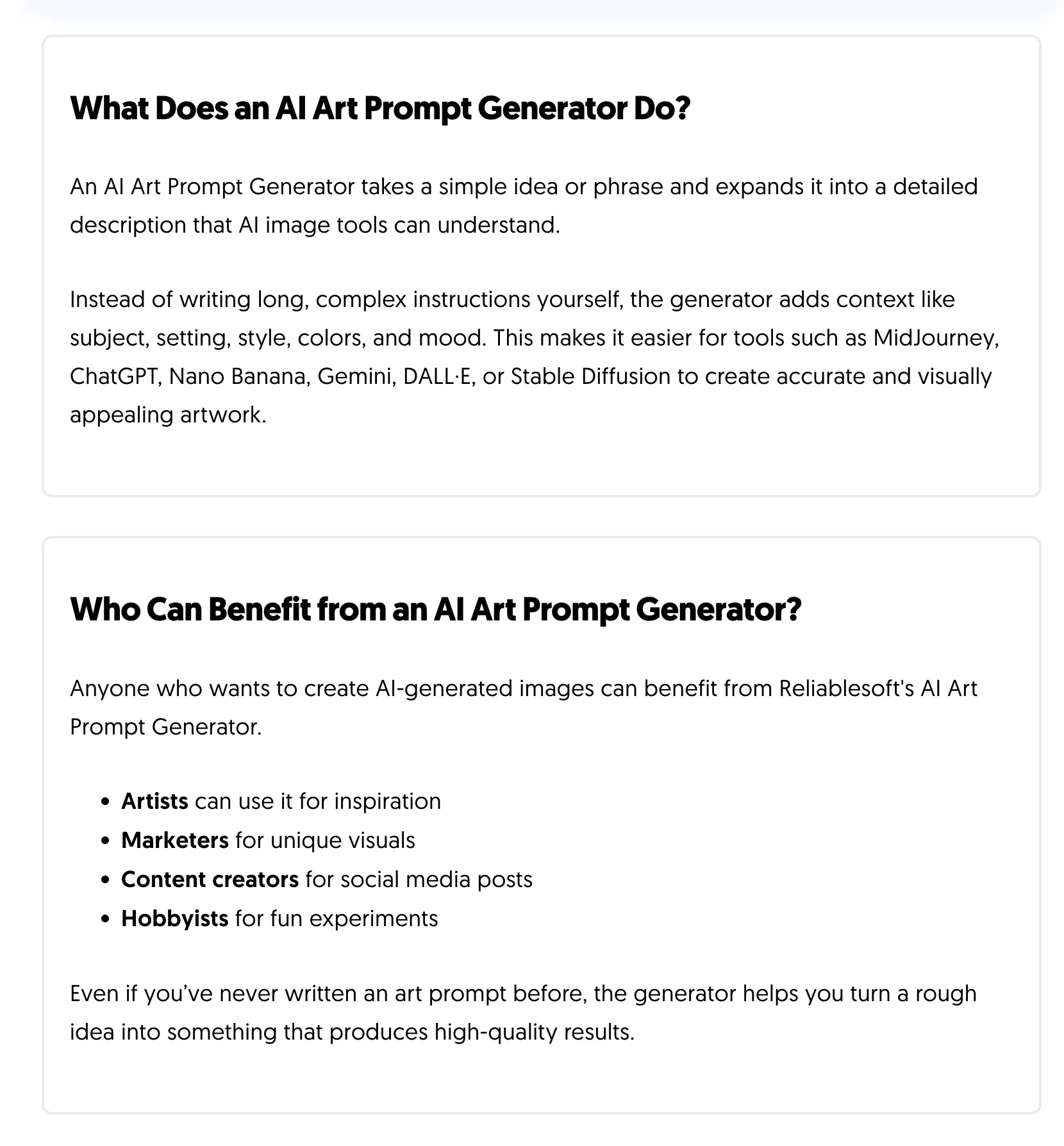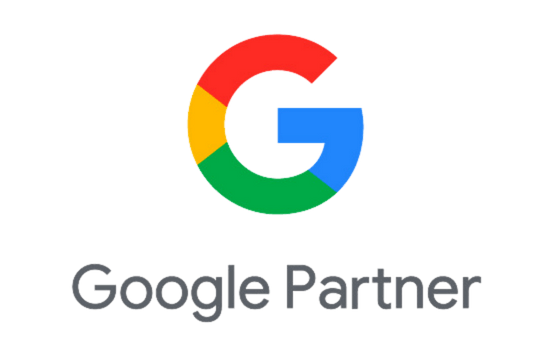If your website's organic traffic has dropped recently, you’re not alone. Many site owners have noticed a steady decline in organic visits, even when their rankings remain strong.
The reason is not your SEO skills or the quality of your content. Google’s AI Overviews, AI Mode, and other search features now answer questions directly on the results page, reducing the need for users to click through to websites.
But this change does not mean SEO is dead. It means the rules have changed.
In this guide, you will learn how to rethink your SEO strategy, rebuild your traffic and create a system that has more chances of surviving Google changes.
This is the same approach we used at Reliablesoft to generate more than 600,000 organic visits from Google in the last few months.
Why Traditional SEO Content Is No Longer Enough
For years, the SEO process was relatively simple. Do your keyword research, find keywords that address user's problems, write long-form unique content, publish, promote, rinse and repeat.
That model worked because search results were simple lists of blue links with no AI intervention.
But today things are different. Blog posts, listicles, and guides are now easy for AI systems to summarize and reformat, which means users can often get the full answer without visiting your site.
Even if you publish something new and unique, is only a matter of time before it becomes common knowledge and served by LLMs without proper attribution.
So, what does this mean for your SEO strategy?
You need to stop creating traditional SEO content and start creating user experiences that AI cannot easily reproduce.
Think of online tools, quizzes, calculators, generators and experiences that require user input and deliver personalized results that AI summaries cannot replicate. That is where your new opportunity lies.
I hear you say that maybe it's a matter of time that Google will offer similar experiences directly in the search results. That's a likely possibility but there is still opportunity to create something better and more personalized for users that the generic search results that serve billions of users cannot deliver.
Users today do not just want information. They want something they can use. That is the key difference between content that gets summarized and content that continues to attract real visitors.
If you want to build a traffic source that AI cannot replace, you need to shift your focus from explaining to enabling. Instead of publishing another “how to” post, create something that helps users complete the task instantly.
And ironically, you can now do that faster than ever with the help of AI tools like ChatGPT, Gemini, Claude, and many more.
How to Increase SEO Traffic
To increase organic traffic in 2025 and beyond, you need to understand what people are actively looking for, create experiences that solve real problems, and give users a reason to visit and stay on your website.
The steps below will show you how.
Step 1: Find What People Actually Search For (Beyond Informational Queries)
The first step in increasing SEO traffic is identifying opportunities where users still click.
Traditional informational queries like “how to write a meta description” or “SEO tips” no longer generate consistent visits.
What still works are queries where users expect to use something, not just read about it. These include words such as generator, calculator, tool, checker, quiz, course, or template.
For example, look at the search volume for keywords containing 'ai generator'.
We are talking about millions of searches per month with a clear intent - users are looking for tools to help them achieve a task.
And this is just an example. If you blend more keywords into the search, you'll understand how big this SEO opportunity is now.
So, what you should do as a first step is to start by brainstorming with ChatGPT.
Tell it what your business does and ask for tool ideas related to your audience. Then verify search demand using SEMrush or Ahrefs.
Look for:
- Keywords related to your business with a decent search volume.
- Keywords with moderate competition and low keyword difficulty.
- Keywords with a clear user intent (people want to perform an action).
The goal is to find tool ideas that align with your niche and have proven demand. Once you have a list of validated opportunities, you can move on to the next step.
Step 2: Group Keywords Into Clusters
Once you have your list of keywords and tool ideas, the next step is to organize them into logical clusters. This is one of the most important stages of your strategy because it determines how Google understands your content.
One of the most common mistakes people make is creating random standalone tools without structure. A single tool may rank, but it won’t help you build authority or help you compete with bigger websites in your niche.
To do this correctly, you should think of clusters as topics consisting of related keywords. It's the same process as creating topic clusters for informational content but this time instead of blog posts, you have tools.
Here are a few examples to understand this better. Let's say you want to rank for AI Text Generator Tools.
You do your research and find tools that belong to the same category. Tools like Instagram Caption Generator, Blog Title Generator, Email Writer, Paragraph Rewriter, are all types of ai text generators.
This approach gives you two big advantages:
- It strengthens topical authority. Google recognizes that you cover an entire subject, not just a single keyword. This helps your pages rank faster and higher.
- It improves user experience. Visitors can explore related tools and spend more time on your site, which signals quality and engagement.
When grouping your keywords, follow these best practices:
- Each main cluster (or directory) should focus on one broad theme that your audience is interested in.
- Create subcategories only if you have at least three to five tools to place under them.
- Avoid creating thin categories with only one tool or little content.
- Keep your structure simple and consistent. Two levels are usually enough: a main directory and tool pages underneath.
For instance:
/ai-text-generator-tools/
/ai-text-generator-tools/email-writer/
/ai-text-generator-tools/blog-title-generator/
This clean hierarchy also allows link equity to flow naturally between your pages, making the entire directory stronger.
As a rule of thumb, your clusters should be broad enough to support future tools but specific enough to help you build topical authority.
Step 3: Build and Publish Your Tools
You don’t need to be a developer to build tools anymore. AI tools like ChatGPT, Gemini, and Claude can help you design, plan, and even write the code for your tools in a fraction of the time it used to take.
In our AI Traffic Mastery Course, we explain the process from start to finish. What is important to understand now is that before building, you need to take time to analyze the competition.
Go to Google and search for tools that are already ranking for your chosen keywords.
Ask yourself:
- What do these tools offer?
- How fast or easy are they to use?
- What do users like or complain about in the comments or reviews?
- What features are missing?
- How can I improve the tools?
Your goal is to spot the gaps and create something better or more affordable than competitors.
Here’s the thing most people miss: if your goal is to grow SEO traffic quickly, one of the most effective strategies is to find paid tools with high search demand and create a free version of them.
This approach works extremely well because users are far more likely to share, link to, and recommend a tool that’s free and easy to access.
While it may require more effort up front and some development cost, the long-term exposure is worth it.
Once your tools start attracting consistent traffic, you can implement smart monetization strategies and turn traffic into profit without sacrificing reach or visibility.
Step 4: Optimize for SEO
As mentioned at the beginning, SEO is not dead, on the contrary, to rank for tool-related keywords, you need to ace your on-page SEO.
Start by optimizing every page individually. Each tool in your directory should have:
- A clear, keyword-rich title that matches what users are searching for.
- A short introduction that explains what the tool does and why it’s useful.
- An SEO-friendly URL that follows your cluster structure (for example, /ai-tools/meta-description-generator/).
- A well-written meta description that encourages clicks from search results.
In addition, you should definitely make sure that:
Add internal links between related tools and categories using optimized anchor text.
For example, look at the titles we use for our tools, which match exactly our target keywords.
Use breadcrumbs and schema markup to help search engines understand your site hierarchy.
Another key step is to add context around your tools.
While the tool itself does the main work, adding a few short paragraphs of supporting text helps search engines understand the page. This can include:
- A simple explanation of how the tool works
- Tips for getting the best results
- Related examples or use cases
Here is an example from our AI Prompt Generator tool.
Lastly, don’t forget to promote your new tools internally. Link to them from your existing blog posts, guides, or other relevant pages. This not only drives traffic from within your own site but also signals to Google that your tools are important parts of your content ecosystem.
So, to sum up, you still need to follow the traditional SEO checklist to get this type of new content to rank high on Google.
Step 5: Promote Beyond Search
The last step to increase organic traffic to your website, that most people ignore is off-page SEO.
Yes, even if your on-page SEO is perfect, you still need to get the Internet talking about your tools and brand. It's the only way to get the attention of search engines and LLMs and to have your products appear in their results.
Here are some simple but effective ways to promote your tools beyond Google:
1. Share Your Tools on Social Media
Post short, helpful updates on platforms like LinkedIn, X (Twitter), and Facebook. Highlight the benefit, not the tool itsel. For example, “Need better SEO titles? Try our free AI Title Generator.” Keep posts visual and action-oriented.
2. Use Online Communities and Forums
Join relevant communities on Reddit, Facebook Groups, or specialized forums where your audience spends time.
Here is a pro tip: Instead of dropping links (which often get removed), mention your tool by name and suggest that users “search for it on Google.”
For instance: “You can try the Reliablesoft Meta Description Generator, just search for it on Google.”
This type of non-linked brand mentions is extremely powerful. It encourages direct searches for your brand name and tool, which tells Google that people are actively looking for your content.
Over time, this builds stronger brand signals and improves rankings.
3. Send Updates to Your Email List
If you already have a newsletter, send an email whenever you release a new tool. Consistent updates keep your audience engaged and help new tools gain early traction.
4. Collaborate with Other Creators
Reach out to bloggers, YouTubers, or podcasters in your niche who might feature your tool in their content. Even a brief mention in a roundup or tutorial can bring a wave of new visitors and natural backlinks.
5. Launch on Product Hunt and Similar Directories
Take the extra step of submitting your tools to public launch platforms and directories. Sites like Product Hunt, AlternativeTo, BetaList, or AI Tool directories are excellent places to showcase your work, reach new audiences, and collect valuable user feedback.
These platforms often get indexed quickly, which helps your tool appear across multiple searches, including AI aggregators and discovery engines.
Final Thoughts
Increasing SEO traffic in the new AI era requires a new way of thinking. The strategies that worked five years ago are no longer enough, but the opportunity is still there for those willing to adapt.
By focusing on creating interactive tools, organizing them into clusters, optimizing for SEO, and promoting beyond search, you can build a sustainable traffic system that continues to grow even as search evolves.
This is the same approach we used to generate more than 600,000 visits from Google in just a few months. If you want to learn how to apply this strategy step by step, from researching tool ideas to publishing, optimizing, and monetizing them, check out our AI Traffic Mastery Course.
It will guide you through the entire process so you can build a system that brings consistent traffic, leads, and growth in the age of AI.
